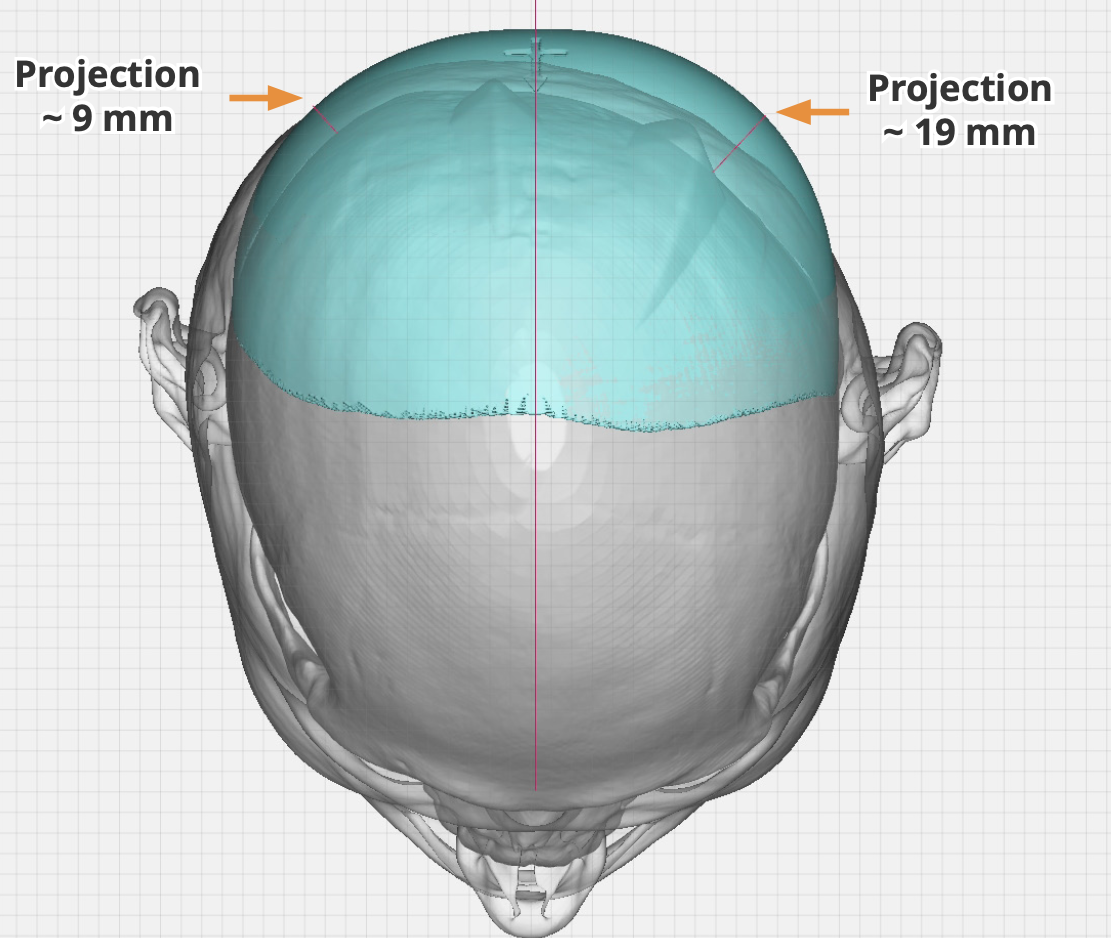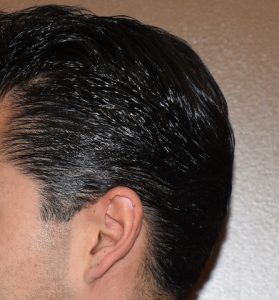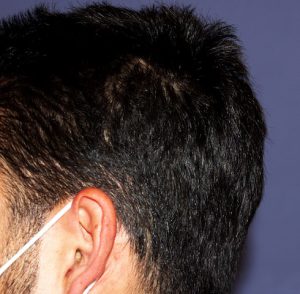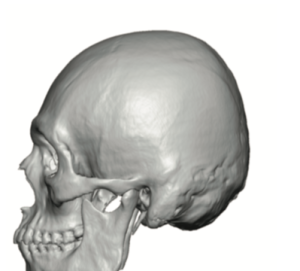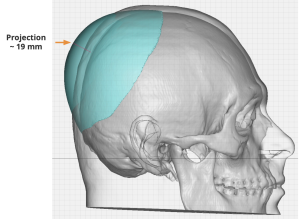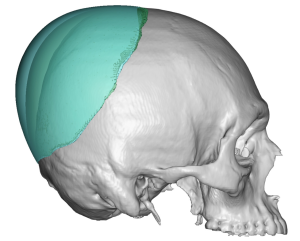Background: Custom skull implants have revolutionized any form of aesthetic head augmentation. Having a preformed design with an assured smooth shape creates head shape changes that were heretofore impossible without major scalp incisions and the use of synthetic bone cements in large quantities. In an indirect way it is a lot like breast implants (although skull implants are solid and not gel-like) in that a small incision using a preformed smooth implant creates a major change in the shape of the breast without a lot of scar tradeoffs.
But unlike the soft tissues of the chest, which are a lot more loose and expandable, the scalp is not as ‘stretchable’. It is already tight, like skin stretched over a beach ball, so it has a more limited capacity to accommodate just any size skull implant placed underneath it. In fact, with the usual scalp incisions made to place them, a skull implant to which the scalp can not accommodate its volume would never even get past the incisional opening. Skull implants are not that deformable and wouldn’t fit through the incision.
What defines a skull implant size that is too big? This will vary amongst patents and the thickness and tightness of their scalp. For example in some thin Caucasian females this might implant volumes of 100cc to 125ccs. In men with increased skin pigments who have thicker more mobile scalps, they may tolerate an implant volume of 175ccs. (Or almost double that of the previous females example) Determining what implant size will be too big for any given patient is not an exact science. But I have come to these important preoperative determinations based on a lot of experience with custom skull implants.
When one knows initially that a large skull augmentation is needed some patients will opt for the two stage approach using a first stage scalp expansion. To avoid a two stage process some patients will choose a lesser augmentation goal with the hope they will see it as enough. But in the advent that they do not how much additional can be placed with a second skull implant replacement?
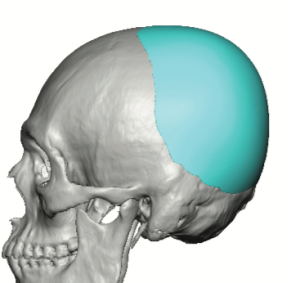
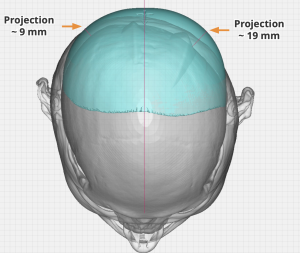
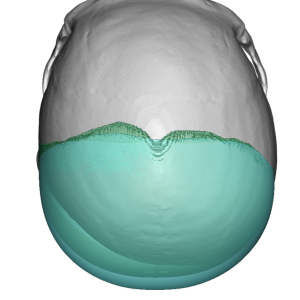

In the unintentional two stage skull augmentation the question is how much bigger of a skull implant can the scalp accommodate. The general rule is that at least 50% more in volume can be safely done. The first implant acts very much like a tissue expander so more implant volume can always be secondarily placed. You have to have at least a 50% volume increase anyway to see an appreciable difference to make the effort worthwhile for most patients. How much more than a 50% increase can be done? Probably more for most patients but that would depend on the natural thickness of their scalp and how bold one wants to be. But almost certainly I woulds never go over a 75% implant volume increase.
Case Highlights:
1) An initial custom back of the head skull implant of 165ccs provided a good improvement but the patient wanted more.
2) A second custom back of the head skull implant was designed that was 260ccs, a volumetric increase of 58%, which posed no problems with implantation.
3) A challenge in placement of a second larger skull implant is how to get though the initial scalp incision.
Dr. Barry Eppley
Indianapolis, Indiana

